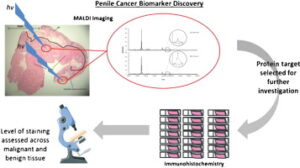Cancer is a broad term used to describe many different diseases. Usually, cancer occurs when abnormal cells in your body get out of control and crowd normal cells.
It can start almost anywhere. Cancer can live in one place, or it can metastasize – it has spread throughout your body. Some cancers grow slowly, while others grow rapidly.
Most cancers are named after where they start in the body. For example, “breast cancer” starts in your breast tissue.
Many cancers form solid tumors, which are tissue growths. But blood cancers, such as leukemia, do not usually grow like tumors. They live in the form of individual cells. Tumors can be either malignant (cancerous) or benign (non-cancerous).
Prevalence: Cancer Is a Common Disease
According to the National Cancer Institute, more than 1.6 million new cases of cancer are diagnosed in the United States each year. About 59,597,690 people die from some form of death each year. (1)
Statistics also show that more than 38% of men and women will be diagnosed with some form of cancer at some point in their lives. (2)
Cancer is the second leading cause of death in this country after heart disease. (3)
Anyone can get cancer, but the risk increases with age. About 9 out of 10 cancers are diagnosed in people 50 years of age or older. (4)
The good news is that advances in screening and treatment are improving survival rates for many types of cancer.
The Gene Factor: How Cancer Happens
Cancer is a genetic disease, which means that it is caused by changes in genes that control the way cells grow and divide in your body.
This mutation in a gene, sometimes called a “mutation,” causes many changes that can cause the cell to become cancerous. Some mutations accelerate the speed at which the cell replicates itself, preventing other cells from knowing when to stop dividing, and still preventing others from dying as is thought to be normal. The cells do. When a cell has acquired enough of these mutations to interfere with the laws by which normal cells behave, it has become cancerous.
Variations can be inherited at birth or inherited during your lifetime. Exposure to harmful substances, such as tobacco smoke or radiation, can damage your DNA and cause gene mutations. Other lifestyle factors, such as extensive sun exposure, can also cause changes.
Just because you were born with a certain mutation does not always guarantee that you will develop cancer. Only 5 to 10 percent of cancers are a direct result of a change in inheritance from a parent. ()) In general, inherited and inherited mutations work together to cause cancer. For example, you may inherit a gene from your parents that puts you at risk for certain types of cancer after you are at risk of smoking.
Metastasis: When Cancer Spreads
Cancer can spread from an area that has started to other parts of your body. This is known as metastasis.
Metastatic cancer can affect many parts of your body, but it still has the same cancer cells as real cancer. Doctors will name your cancer based on its location. Therefore, pancreatic cancer that has spread to your liver is still known as pancreatic cancer.
In general, metastatic cancer cells look like real cancer cells when viewed under a microscope.
When cancer spreads, it becomes very difficult for doctors to treat it.
The Most Common Cancers Affecting Americans
Nonmyelitis is the most common form of skin cancer, affecting approximately 3.3 million people in the United States each year. (6)
It is followed by breast cancer, followed by lung cancer and prostate cancer.
Other common cancers include:
Bowel and rectal cancer
Blood cancer
Liver cancer
Bladder cancer
Endometrial cancer
Kidney cancer
Melanoma
Non-Hodgkin’s lymph
Pancreatic cancer
Thyroid cancer
Cancers Start in a Variety of Different Tissues in the Body
Cancer can occur anywhere in your body. There are many types of cancer, and each type has its own side effects that doctors can approach in different ways.
Cancer is sometimes divided into categories, which include:
Carcinomas are the most common type. They are formed by epidural cells, which connect the inside and outside surfaces of the body. Carcinomas can be divided into the following subcategories.
Adenocarcinomas develop into epidural cells that make up fluid or mucus. Adenocarcinomas are breast, colon and prostate cancers.
Basal cell carcinomas begin in the lower part of the skin.
In epithelial cells, squamous cell carcinomas form just below the outer surface of the skin. Squamous cells also line the organs, such as the intestines, stomach, bladder, lungs, and kidneys.
Transient cells form carcinomas into a type of tissue called transient disease. Bladder, ureters, or kidney cancers are sometimes transitional cell carcinomas.
Sarcomas form in the bones and soft tissues of the body (muscles, blood vessels, fats, tendons, ligaments, or lymph vessels). Osteosarcoma is a common type of bone cancer. Soft tissue sarcomas include capsaicin sarcoma, liposarcoma, and others.
Leukemia in blood-forming cells is cancer leukemia. They do not usually form tumors, but instead grow in the blood and bone marrow.
Lymphomas Lymphomas are cancers that develop from normal lymphocytes, which are white blood cells that fight infection and are part of your immune system. Hudkin’s lymphoma and non-Hudkin’s lymphoma are the two main types.
Melanomas These cancer cells start in what is called melanoma, which colors your skin. Most of the time, melanoma occurs on the skin, but it can also develop in other areas, such as the eye.
Multiple myeloma multiple myoma is a type of blood cancer derived from plasma cells, a type of immune cell.
Tumors of the brain and spinal cord: These tumors form in the body’s nervous system.
Neuroendocrine tumors grow in cells that release hormones into your bloodstream.
Carcinoid tumor is a type of neuroendocrine tumor commonly found in the rectum and small intestine.
Bacterial cell tumors Bacterial cell tumors begin in your body’s reproductive cells (eggs or sperm).
